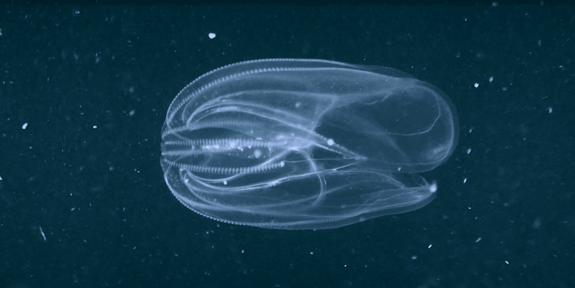What Are Comb Jellies?
These simple bioluminescent animals are 95% water and can be found anywhere from the deep ocean to shallow coastal areas like the Indian River Lagoon. Comb jellies can swim but are considered zooplankton because the forces from currents and tides are normally too strong from them to swim against. Although they don’t seem like animals, comb jellies can eat, swim, locate food, and sense gravity.
People usually find these clear golf ball to tennis ball sized jellies washed onto the sand or floating in the surf while visiting the beach. There are many ways to experience the glowing waters from bioluminescent comb jelly and dinoflagellates. In Canaveral National Seashore, you can experience the bioluminescent comb jellies by scheduling a guided bioluminescent kayaking trip, or by renting a canoe overnight at the Apollo Beach Visitors Center.
Are Comb Jellies Bioluminescent?
Yes! The comb jellies seen while kayaking in Florida are bioluminescent and give off a bright blue-green light at night. They have 8 stripes down their side which have the swim plates, comb rows, and the cells that produce light for bioluminescence. The comb rows contain the specialized cells called photocytes that produce bioluminescence, these are the same specialized cells that fire flies use to glow. The light produced by these cells is triggered by movement and caused by a chemical reaction when photoprotein enzymes react to a catalyst enzymes. During the day, the rows naturally refract sunlight making them shimmer in the water like rainbows as a comb jelly swims. When activated (by movement), the 8 stripes light up to create blue-green bioluminescence. You can see bioluminescence from comb jellies while kayaking when they are moved by anything in the water like fish, shrimp, dolphins, manatees, kayaks or other forces like natural currents, tides, and waves.
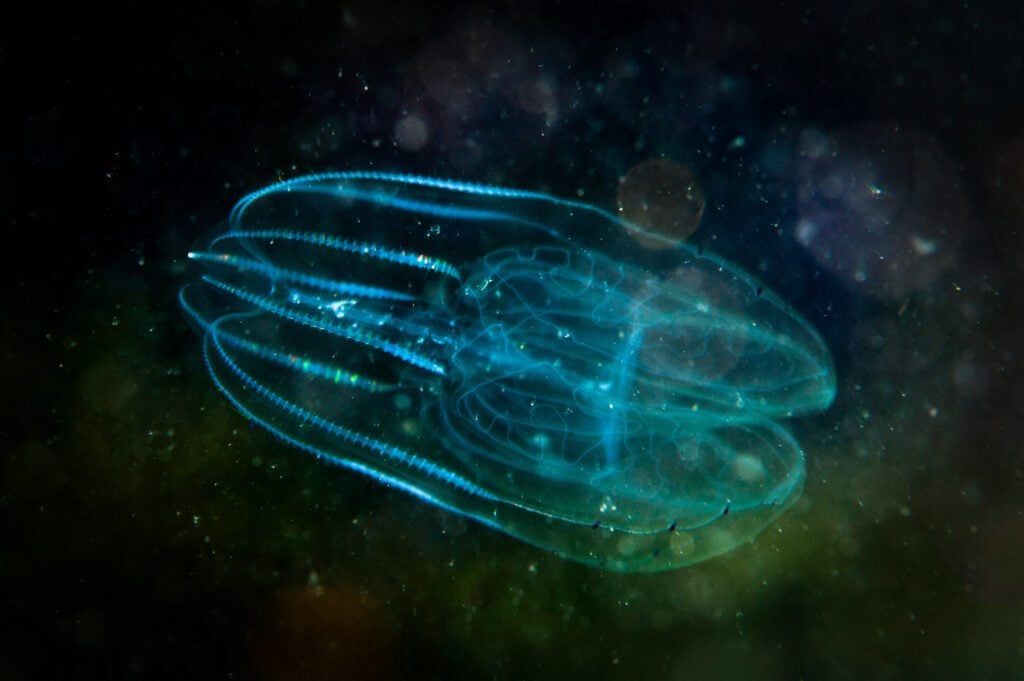
Why Are Comb Jellies Bioluminescent?
It is unknown what caused comb jellies to develop bioluminescence, but it’s believed they use it for defense tactics and communication. The light from their bioluminescence may be used to startle a predator with eyes or used to attract larger predators to disrupt whatever is trying to eat them. We can observe some causes of bioluminescence while kayaking in Canaveral National Seashore.
What Else Creates Bioluminescence?
Do Comb Jellies Sting?
Nope! Comb Jellies Do Not Sting
Nope, comb jelly tentacles are sticky to catch prey and don’t sting. Comb jellies do not sting and are one our favorite little animals to see. We recommend pointing out and sharing your knowledge about the smelly jellies and practicing Leave No Trace so they can go undisturbed and you can see them again.
Are Comb Jellies Related To Jellyfish?
Although they look similar at first with Comb Jellies paddling through the water and Jellyfish traveling along with their pulsating bells, they have very different structures and traits that place them in different phyla. Besides what is seen at first impression, they are really distant so it quickly becomes difficult to find similarities between the two and becomes like trying to compare rattlesnakes and earthworms. More about jellyfish and comb jellies can be found with the Smithsonian Institutions and NOAA.
Viking EcoTours offers year round bioluminescent kayaking tours using pedal kayaks. These effortless pedal systems are a great option for anyone looking for an easier trip on the water by powering the kayak with your legs rather than arms. Kayaking trips like Viking EcoTours’ Guided Stargazing & Bioluminescent kayaking tours offer easy and convenient access to bioluminescent experiences. Those looking for an overnight and rugged experience can rent a canoe overnight at the Apollo Beach Visitors Center and use recreation.gov to reserve a backcountry island campground.
What Comb Jellies Can I See In Florida?
Sea walnuts (Mnemiopsis leidyi) and pink comb jelly (Beroe ovata) are the most common comb jelly species we’ve found kayaking through Canaveral National Seashore and along Florida’s Atlantic coast. Comb jellies are a huge group of animals and make up 200 known species in the phylum Ctenophora. While most produce bioluminescence, some species like the sea-gooseberry are not capable of producing any bioluminescence.
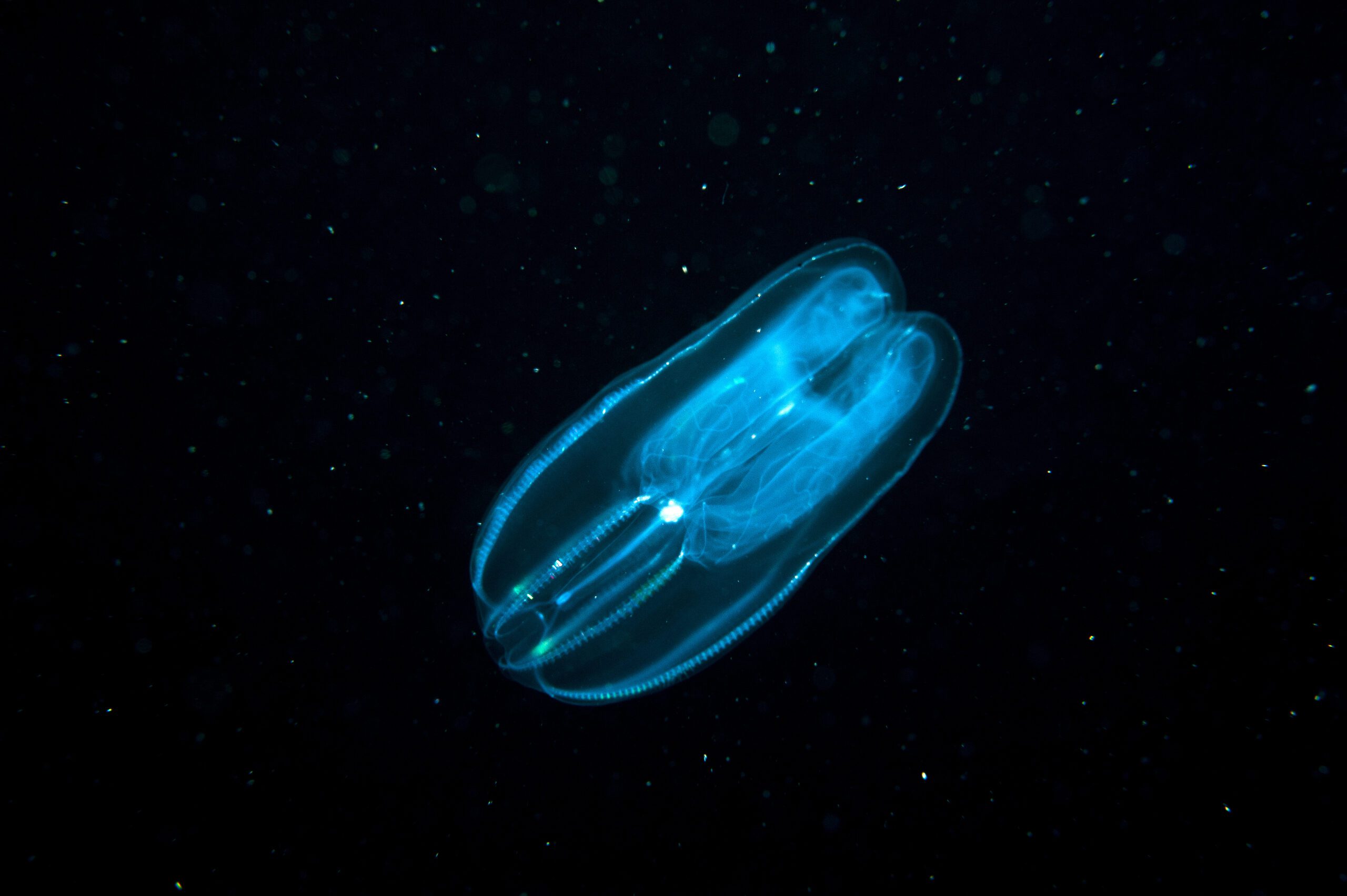
When To See Comb Jellies In Florida?
We see comb jellies while kayaking the most often during their large blooms from October – May in the Indian River & Mosquito Lagoon. Comb Jellies bloom in Florida during these colder months but can be seen all year. These blooms can be large enough to block the seawater intakes at power plants and overfill fishing nets but they make a spectacular sight at night. It’s believed that these blooms are related to high nutrient runoff from humans and warmer water temperatures. People can find them easily while walking on the beach, boating, or kayaking throughout the year.
Can Comb Jellies Swim?
Yes! Comb jellies have 8 band-like strips down their side that have swimming plates which lets them “paddle” through the water. These swimming plates are made up of comb rows containing cilia which are little hairlike structures. Comb rows are similar structures to eyelashes and the cilia are like the individual eyelashes (hairs) that grow along an eyelid. Just like people’s eyelashes when blinking, the comb rows move all the attached cilia at once and this is what paddles the jellies through the water.
What Do Comb Jellies Eat?
They are carnivores and usually eat whatever plankton they can find, including other comb jellies. They can eat other jellies larger than themselves by “biting” off pieces and expanding their stomach’s to consume prey up to half of their size. As such a simple animal, they have few specialized organs and are made up of about 95% water with most being able to detect chemical traces in the water allowing them to locate food sources and a structure called “statocyst” that’s gravity sensitive and helps them keep their orientation in the water. Along with this their outer layer of cells secretes a thick stinky mucus to trap prey.
Comb Jelly vs Stinging Jellyfish
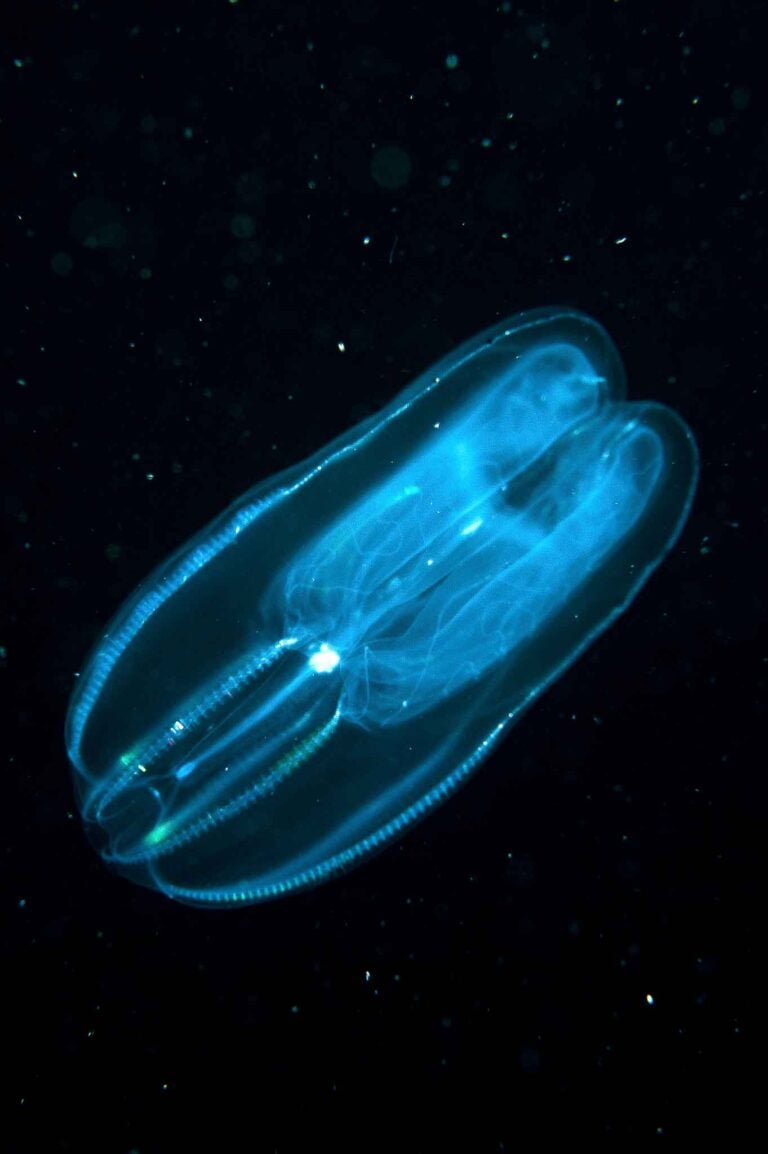
Comb Jelly - Cannot Sting
Harmless little comb jelly, likely a sea walnut (Mnemiopsis leidyi) that we see while kayaking.
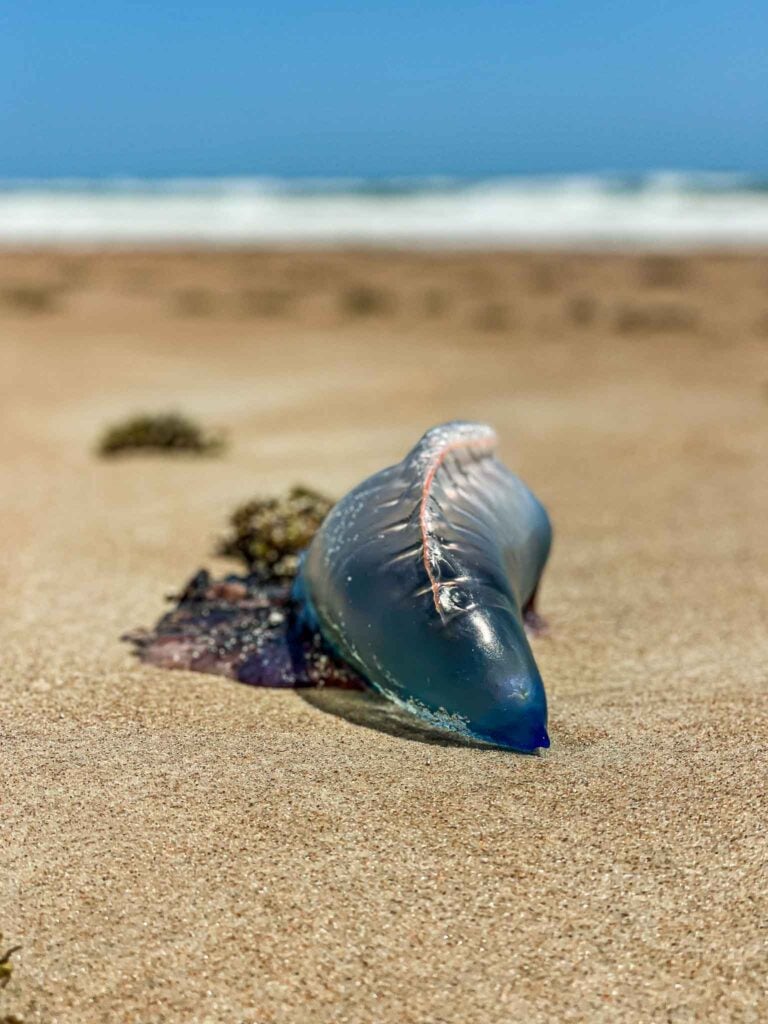
Man O' War - Does Sting
The Portuguese man o’ war (Physalia physalis) is not a type of jellyfish but is a colony organism and do live offshore but are found when washed onto the beach. They do sting.

Cannonball Jellyfish - Does Sting
The cannonball jellyfish (Stomolophus meleagris) does sting and can be found off of coastal areas and are an import export for southeastern U.S. Fisheries. They are sold overseas after being dried, preserved, and packaged.


